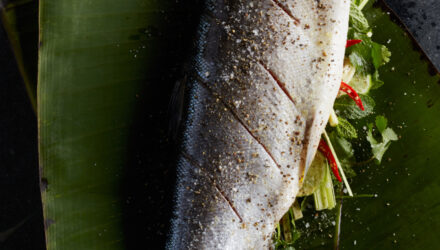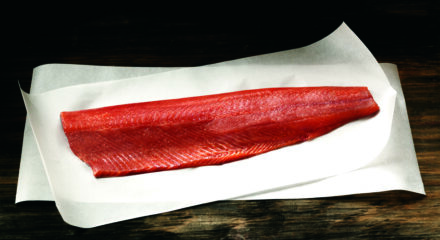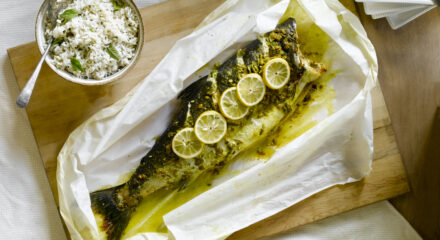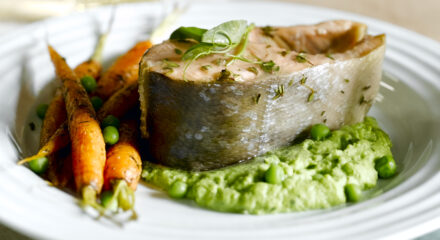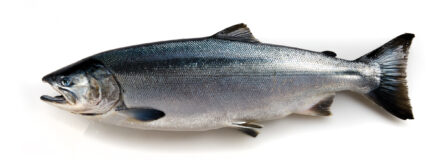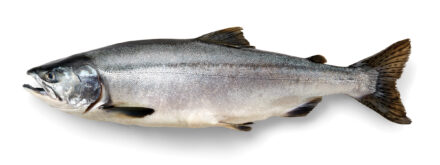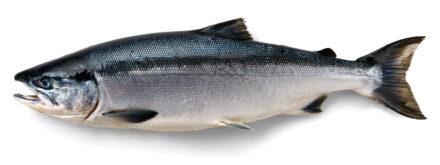
Keta Salmon
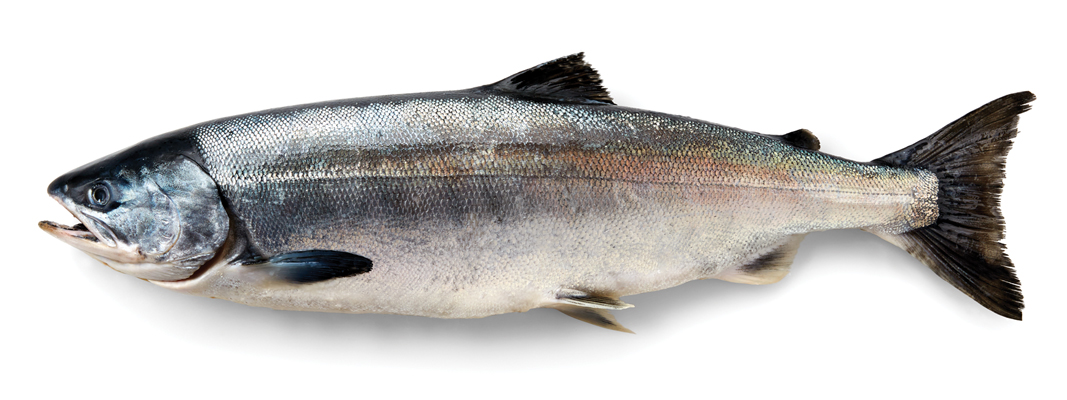
With a mild flavor and firm pink flesh, keta salmon are a great choice for grilling or roasting.
Watch the video
-
Scientific Name: Oncorhynchus keta
-
2 certifications
The Alaska keta salmon fishery is certified under two independent certification standards for sustainable fisheries:
3-4 years
Keta salmon spend 3-4 years in the ocean before returning to freshwater to spawn
22g
Alaska keta salmon is packed with 22g of high-quality protein per every 3oz portion!
-
Nutrition
-
Protein22gVitamin B-122.9mcg (167% DV)Omega 3683mgPotassium470mg (10% DV)
Alaska keta salmon is packed with lean, high-quality protein and marine-derived omega-3 fatty acids, essential to the human body.
The high-quality protein in wild Alaska keta salmon build and maintain lean body mass, help regulate metabolism, improve satiation—leading to lower intake and possible weight loss, and build stronger muscles, resulting in greater mobility, strength, and dexterity.
Wild keta salmon also provide marine-derived omega-3 fatty acids, essential to the human body. DHA and EPA in wild Alaska keta salmon are the most studied, beneficial, and readily usable healthy fats for the body.
Learn MoreDV = Daily Value // 3.0 oz = 85g Source: USDA Standard Reference Release 28
-
Harvesting & Seasonality
-
Wild Alaska keta salmon are the most widely distributed of the 5 salmon species in Alaska, and are harvested and available fresh from June through mid-October and are also available frozen year-round.
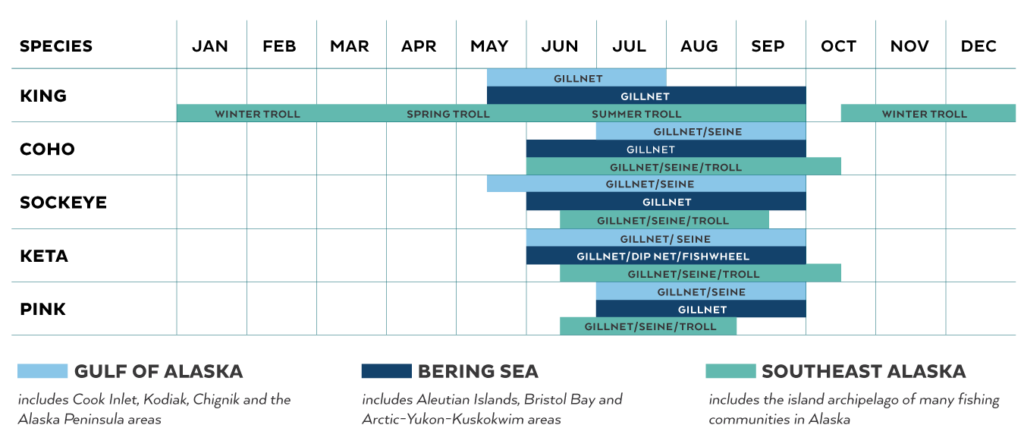
Keta salmon is harvested by three different methods: gillnetting, purse-seining, and trolling.
Learn More -
Sustainability & Environment
-
In Alaska, the future of wild keta salmon and the environment are more important than the immediate opportunities for harvest.
As a wild resource, there is variability in the number of salmon that return to freshwater to spawn annually. Managers in Alaska set ‘escapement goals’ using the best science available to ensure enough fish return safely to the freshwater spawning grounds to reproduce. Biologists account for natural fluctuations in returns of salmon by managing the fisheries in-season to ensure the sustainability of Alaska’s wild keta salmon.
Wild Alaska keta salmon are not only important ecologically, but they are also intrinsically tied to subsistence fishing in rural Alaska. Families in Alaska’s coastal communities depend on subsistence salmon fishing to survive. In Alaska’s salmon fisheries management, subsistence has priority before sport, commercial or personal use fishing.
Learn More -
Fun Facts
-
- One of the larger species, most wild chum salmon are at least 2 feet long!
- Keta salmon (also known as chum salmon) return to spawn in two distinct races, an earlier run called summer chum salmon and a later one called fall chum salmon.
- Alaska’s wild salmon belong to the genus Oncorhynchus, a name formed by combining two Greek words, ‘onco’ (meaning hooked or barb) and ‘rhyno’ (meaning nose), a name given due to the hooked or ‘kype’ nose seen on spawning males.
-
Product Forms & Availability
-
Alaska keta salmon is available both fresh and frozen in the following product forms: whole, or dressed whole without the head, in portions, fillets, canned and smoked.
Wild Alaska keta salmon are also prized for their roe. The rich eggs are packed with omega-3 fatty acids and possess a deep resonating flavor which has especially endeared it to international consumers. The vibrant color and thicker shell of the eggs relative to other species means they are a total sensory experience perfect for complimenting a dish or serving on its own.
Find Alaska keta salmon in your local grocer in the frozen section as well as in the fresh case seasonally. Unsure about origin? Just #AskforAlaska.
Purchase directly from sellers using our supplier’s directory.
Buy Now -
Cooking
-
The lean, but dense meat is cooked best at a lower cooking temperature and lends itself to baking, broiling, grilling, poaching, sautéing, smoking, sushi/sashimi, roasting, steaming, and canning.
Learn More




